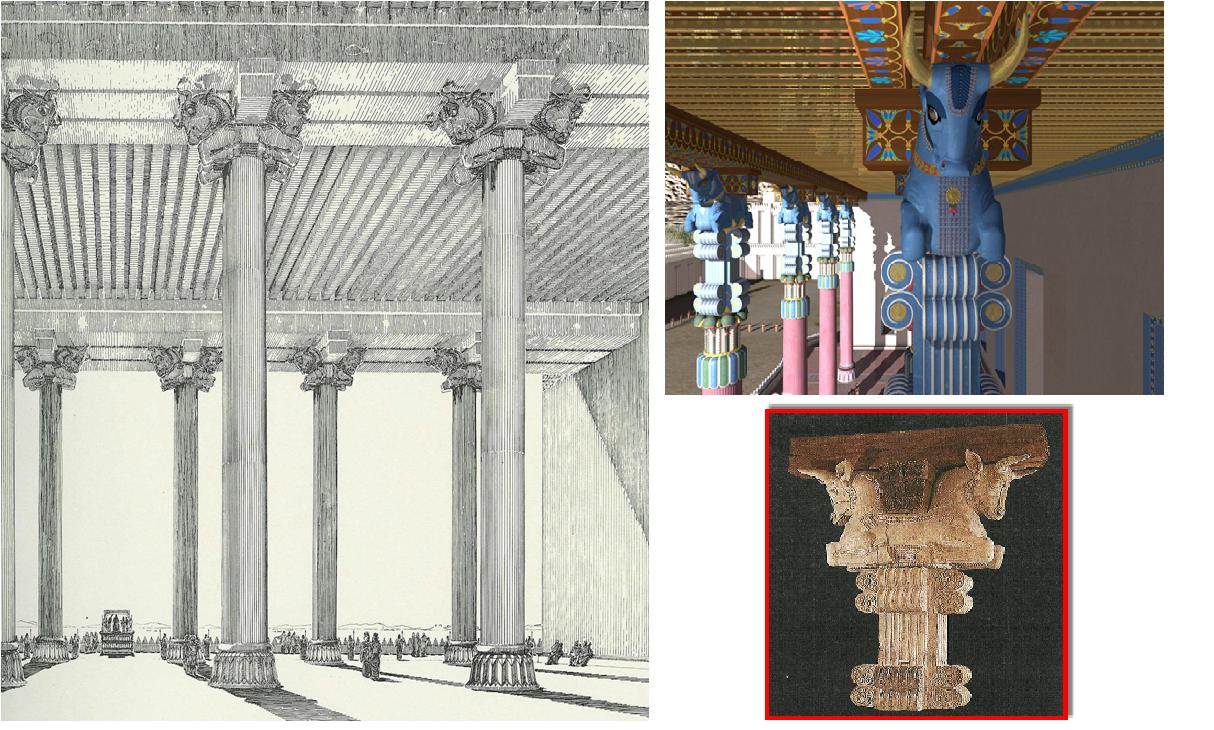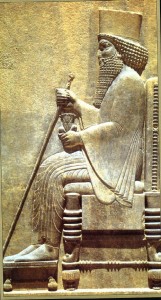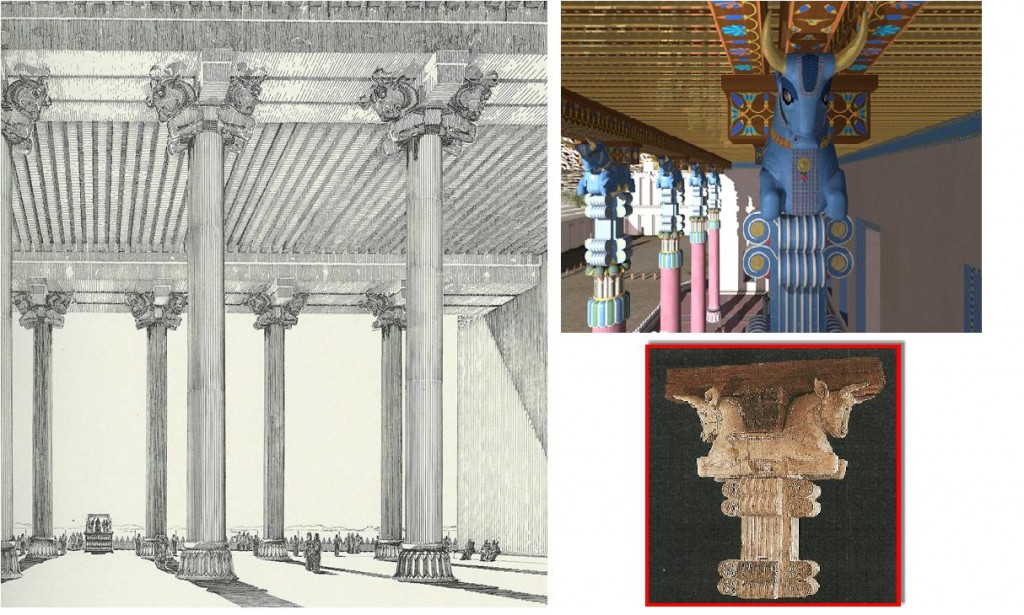The report below was first posted by Payvand News of Iran on December 29, 2004. Kindly note that the image displayed below did not appear in the original Payvand News report.
===============================================================
Achaemenian engineers had been using pi number in geometry 2500 years ago. They used this mathematical concept in building the conical stone structures and columns in Persepolis.
The Achaemenian king Darius the Great (550-486 BCE) founded Persepolis, near Shiraz in Fars province circa 521 BCE. By 486 BCE much of the major structures of Persepolis such as palaces, residences, water canals, etc. had been completed, but in practice continuing work at the site appears to have continued well into the arrival of Alexander in the 330s BCE.
Pi representing the ratio of the circumference of a circle to its diameter is one of the most important discoveries in geometry. Mathematicians today still do not know the exact date when this number was first used. Many people believe that the Egyptians have been the discoverers of this number, and some consider the Greek as its discoverer. But new studies show that the Achaemenians were also familiar with this concept.
Abdol-Azim Shah-Karami, a geophysics expert responsible for studying the engineering of Persepolis structure, told CHN (Cultural Heritage News).
“New research on Persepolis structures and especially its columns and conical shapes show that the Achaemenians 2500 years ago used the assistance of mathematicians who had solved the mystery of pi for building conical shapes…The precision in building the Persepolis circular columns shows that these mathematicians had calculated pi to several decimal places. The Achaemenian engineers could determine the exact conic section of each circular column, and in order to do this, they had to calculate pi to several decimal places. This helped them calculate the height of columns and the pressure on them, and distribute the tension on the conic section of each column”
According to historical records, the first person to be able to exactly calculate pi was the Muslim scientist, Ghiasoddin Mohammad Kashani. He computed pi to several decimal places, and scientists like Pascal followed him with more precise calculations. Referring to conic sections in different parts of Persepolis, Shah-karami said it would have been impossible to measure the area and circumference of these circular and oval structures without knowing pi.






